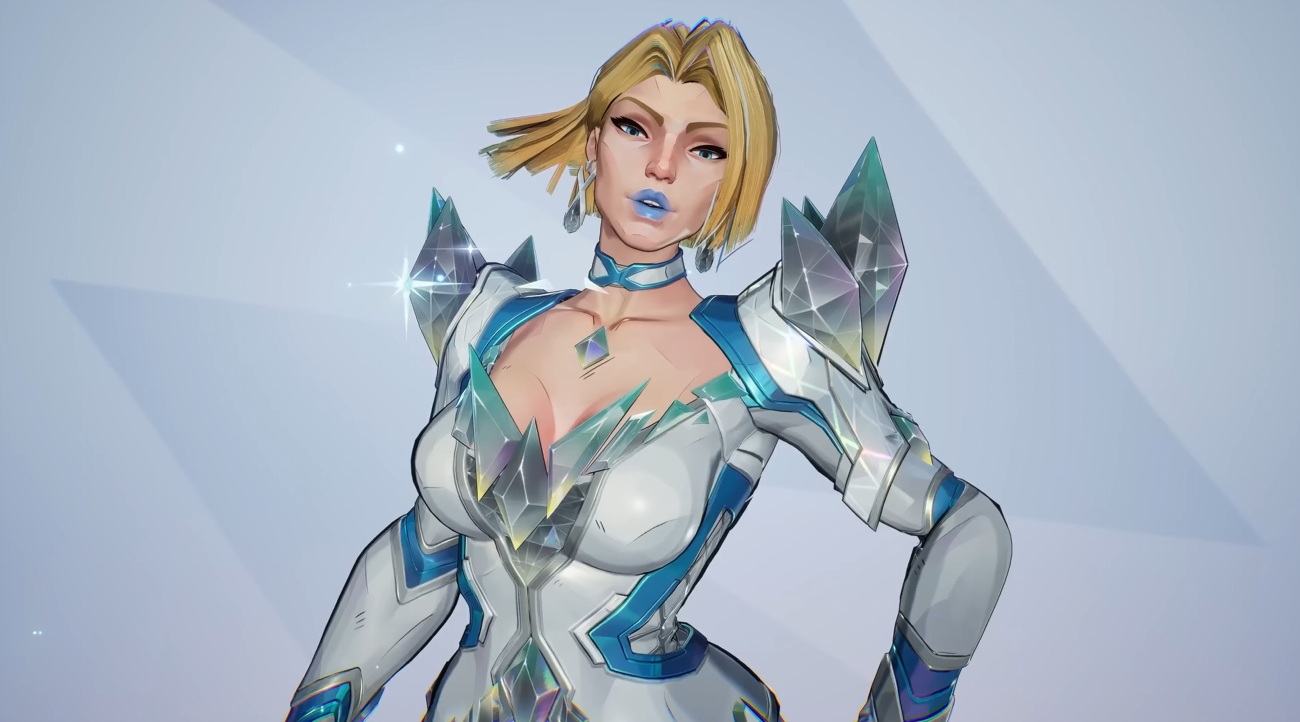Sonic CD: Xbox Windows Phone Review
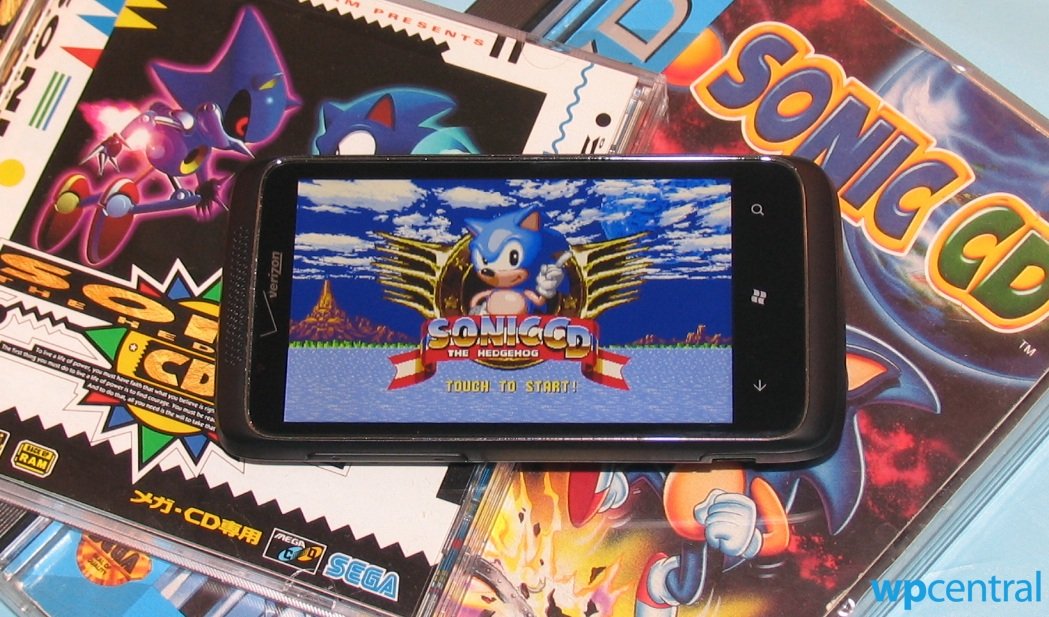
A few years ago, an Australian Sonic fan named Christian Whitehead created a proof of concept of a reprogrammed version of Sonic CD for iOS. The demo video quickly vanished, but not due to a copyright claim from SEGA. Instead, the house that Sonic built actually displayed unprecedented coolness by hiring Christian to fully develop Sonic CD for multiple devices, including the Xbox 360 and Windows Phone. After interviewing SEGA about the game, we came away excited.
The WP7 version appeared 11 months later than the XBLA one, prompting many to wonder whether it had been discreetly canceled. Luckily, the Aussie dev continued plugging away on the XNA port of his Retro Engine, and now Windows Phone gamers can enjoy a virtually perfect port of Sonic CD.
From Sega CD to your phone
Sonic CD was originally released for the Sega CD/Mega CD add-on for the 16-bit Sega Genesis/Mega Drive console way back in 1993. As I mentioned, this version runs on the new Retro Engine rather than as an emulated port. The benefits of this approach are many, but chief among them is the widescreen display.
Instead of stretching the image and distorting the proportions of the graphics, the new game simply expands the field of view while keeping Sonic and his enemies looking pixel perfect. And graphically, Sonic CD remains a beautiful 2D game, with better animation than the 16-bit cartridge Sonics and backgrounds that pack tons of detail and layers of parallax scrolling.
Story and Soundtracks
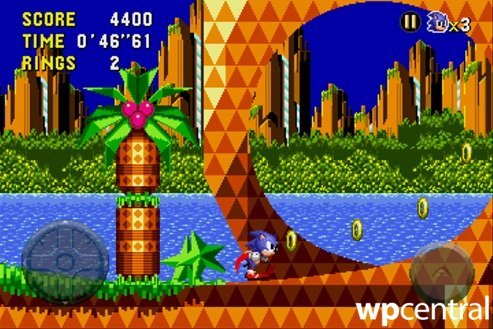
In this installment’s story, the mysterious Little Planet appears in the sky of Sonic’s world once a year. Sonic arrives to discover the planetoid chained to his own planet by his nemesis evil Dr. Eggman. The narrative comes to life through a fully-animated introduction and two different endings. While these anime sequences looked grainy and small on Sega CD, they appear in full screen and a much higher quality on Windows Phone – impressive stuff. Also of note: the robotic foe Metal Sonic debuts here and later reappears in Sonic 4: Episode II, which takes place directly after this one chronologically.
Get the Windows Central Newsletter
All the latest news, reviews, and guides for Windows and Xbox diehards.
Curiously, the original Sonic CD had two different Redbook audio soundtracks: the Japanese/European soundtrack and a separate US version composed by Spencer Nielsen. Thankfully SEGA included both soundtracks here. The Japanese version’s energetic techno tunes are some of the best in the series, right up there with Sonic 2, the Saturn/PC port of Sonic 3D Blast, and now Sonic Generations. Still, the US soundtrack’s ethereal trance music fits the game quite well, other than the crummy bonus stage theme.
Despite its generous selection of music, Sonic CD has two audio shortcomings. SEGA couldn’t license the lyrics for ‘Sonic – You Can Do Anything’ and ‘Cosmic Eternity – Believe in Yourself,’ the Japanese songs that play during the game’s opening and ending, in time for inclusion in the remake. Instrumental versions fill in for the full songs, but ‘You Can Do Anything’ just sounds wrong without the lyrics. At least the US soundtrack includes the appropriate 'Sonic Boom' lyrics.
The other ‘flaw’ is unique to the Windows Phone port. While the other remade versions loop their audio seamlessly, the WMA format on WP doesn’t support that option. So there is a brief pause when tracks repeat, just like the original Sega CD game.
Adventures in Time
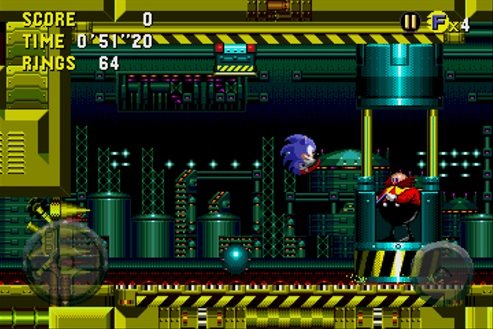
This particular boss is pretty annoying.
Sonic is known for his speed, and he’ll put it to good use at many points throughout Sonic CD. But this game has much more of a focus on exploration than other 2D Sonics. The levels are downright vast and filled with more nooks to explore than a hedgehog could ever ask for. The increased scope stems from the new (and extremely unique) time traveling mechanic.
By touching sign that reads ‘Past’ or ‘Future’ and then maintaining an uninterrupted high speed for three seconds, Sonic can actually leap through time! Every full stage has four different iterations: past, present, good future, and bad future. Traveling to the past and destroying Eggman’s Robot Transporter results in all of Eggman’s robots turning into flowers. Head to the present and then the good future and you’ll find a changed world free from Eggman’s influence. But jumping into the future without breaking the Transporter reveals a desolated industrial world, full of extra enemies and hazards.
The difference in appearance, music, and layout between the various eras of each level is truly amazing and has never been seen again in a Sonic title. That said, the actual time-traveling mechanic could use some work. It’s far too easy to touch the wrong sign by mistake when you’re trying to travel to a specific era, and each sign can only be used once. I wish Sonic could just choose ‘Past’ or ‘Future’ without worrying about the signs.
Bonus Levels
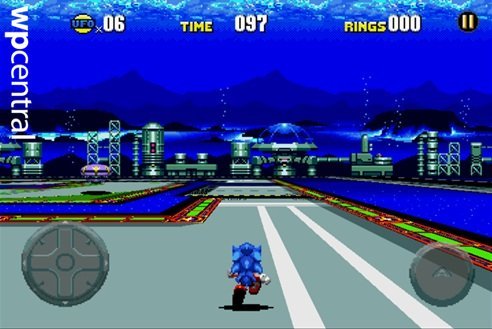
By reaching the end of a regular act with at least 50 rings, Sonic can enter bonus stages – just like Sonic 4: Episode I. Whereas that game’s bonus stage design came from the first Sonic game, this one’s bonus stages are unique. Sonic must run around a 3D space and destroy all of the UFOs before time runs out. If he steps in water by mistake, he’ll rapidly lose precious time. The 3D effect has been totally redone in this version and looks much better than on Sega CD.
Much of the bonus levels’ challenge stems from not being able to control Sonic’s speed; he moves forward constantly, even when knocked down by traps. I like these bonus levels overall, but the final three will likely take a ton of tries to beat. Clear them and collect all seven Time Stones, and then beat the final Eggman boss battle to unlock the game’s good ending.
Extras
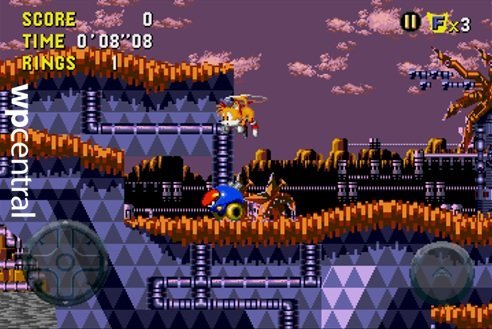
The new Sonic CD has several extras beyond the enhanced graphics and soundtrack selection. Beating the game once unlocks Tails (who did not appear in the original) as a playable character. He can’t do Sonic’s new run-in-place move, but he can fly! The little fox adds a substantial bit of replay value, but you can't unlock Achievements while using him.
The Extras menu includes four options: D.A. Garden (an animated music visualizer), Sound Test, Stage Select, and Visual Mode (a movie viewer). All must be unlocked by clearing Time Attack mode with certain times (two of which require some skill).
Achievements
Sonic CD’s Achievements are identical to the XBLA version’s. These include a handful of stage-specific goals like discovering the angel statue in Wacky Workbench Act 1 (past), and reaching the higher Goal sign in Collision Chaos Act 2.
Tougher goals include collecting all seven time stones and destroying the Metal Sonic projectors in the past versions of every zone. Both goals can be done in a single playthrough, but it’s easier to do them separately because collecting all the Time Stones too early will make subsequent Metal Sonic projectors disappear before you can get them.
The hardest Achievement requires players to complete Time Trial mode in less than 25 minutes. Time Trial stages can be selected individually, thank goodness. With some practice or by following YouTube videos, it shouldn’t prove too painful. On the whole, Sonic CD’s Achievements are a bit easier than Sonic 4’s. Check out our Achievement Guide for super helpful maps and tips!
Overall Impression
This Sonic CD stands alongside the XBLA version of Bionic Commando: Rearmed as one of the best and most accurate retro remakes of all time. The original game won the hearts of the few people lucky enough to have Sega CDs with its gorgeous visuals, stellar soundtrack(s), and clever time traveling mechanics. Now, thanks to SEGA and one amazing programmer, Windows Phone gamers can enjoy an even better version of this seminal platformer. If you enjoy the genre or Sonic himself, you owe it to yourself to pick it up on one platform or another.
Sonic CD costs $4.99, the same price as the iOS and XBLA versions. Get it here on the Windows Phone Store.

Paul Acevedo is the Games Editor at Windows Central. A lifelong gamer, he has written about videogames for over 15 years and reviewed over 350 games for our site. Follow him on Twitter @PaulRAcevedo. Don’t hate. Appreciate!

